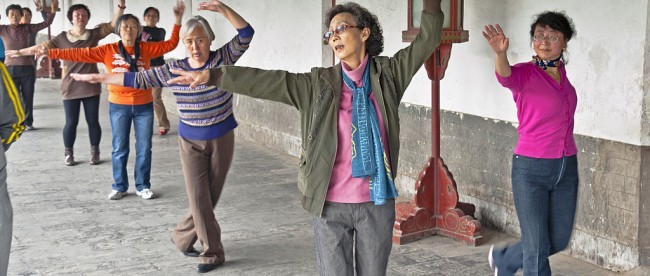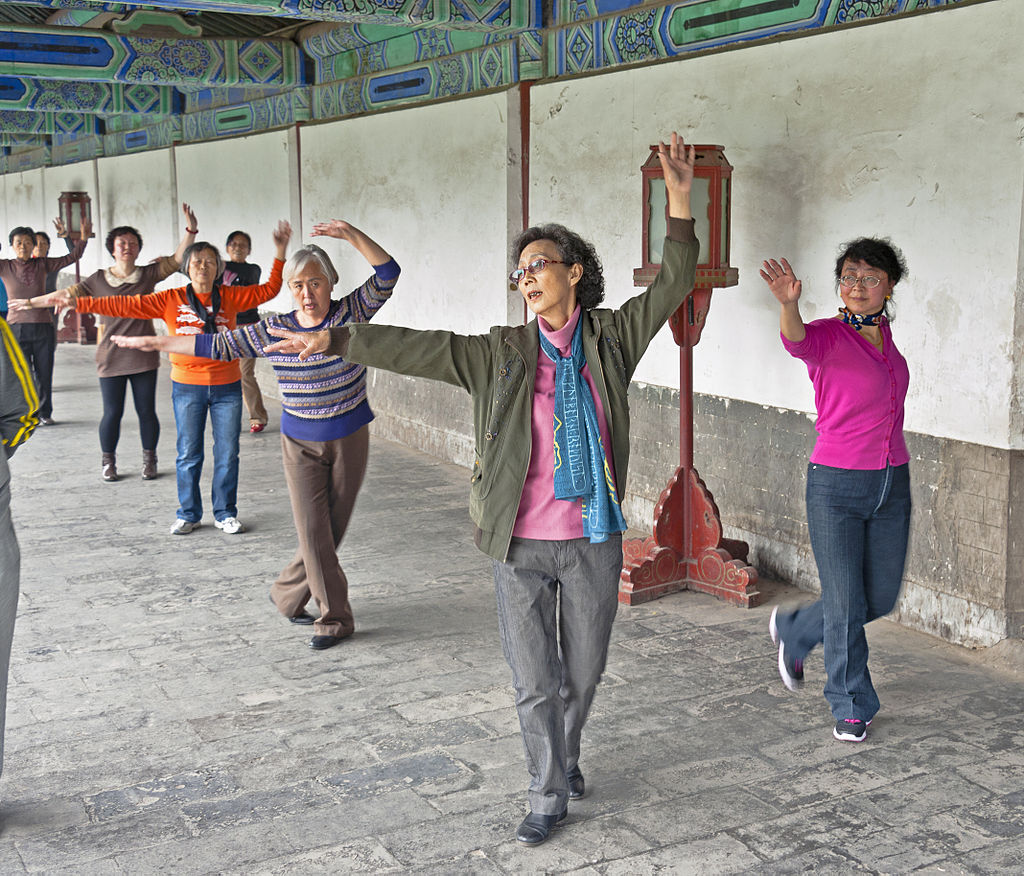The Revolt of the Dancing Grannies


The women pictured above are in China. Most of them are age 55 and older and are likely retired. They’re gathered in a public park. And like millions of other Chinese women their age, they’re there for a morning square dance.
Even though the Chinese government tried to stop them.
Square dancing in China, at least among middle-aged and older women, became a trend in the mid-1990s. Forced retirement was the norm, and women of that age bracket found themselves unable to work, with children (or, more likely, “child” due to government policies at the time) which were grown up, and, well, not a lot of other things to do. Dance parties became a solution which met many of the needs of these women. They were a chance to socialize, good exercise, and a fun way to use all that extra leisure time. Oh, and they were free — all you needed was a pair of appropriate shoes, some music, and somewhere to dance.
As a result, the hobby became quite popular. An estimated 100 million people partook in the hobby at least occasionally, according to China’s state-run television. Some of the women even formed dance teams and participated in local talent competitions. The phenomenon garnered a perfect nickname in the English-speaking press: the “dancing grannies.” And they danced at all times of day; from early morning and into the night, public parks around the nations played host to congregations of women square dancing.
It was great — unless you lived near one of the parks at which that these women held their informal dance parties. In this case, the loud music blaring during the early morning or late evening was an unwelcome addition to their lives. These neighbors objected (in sometimes extreme ways — such as by throwing their feces at some dancing grannies) and the Chinese government took notice.
The solution? The government regulated dancing — and in a weird, draconian way. While one may have expected limits on noise level, time of day, or even the number of participants, the Chinese authorities went with a much more restrictive and directed approach: you could still dance, but only if you used choreography and music approved by the government. As USA Today reported, the Ministry of Culture’s edict proclaimed that “‘there will no longer be different dance routines for each community, but instead unified national routines,’ chosen by an expert panel of fitness instructors.”
Despite the fact that the square dancing sessions were unpopular with the locals, the edict from the government proved even more unpopular. As the New York Times noted, “newspaper commentaries and social media chatter responded to the news with ridicule, with many complaining that the regulations had largely sidestepped the issue of noise that is at the heart of many complaints.” Instead of regulating the dances, they argued, the government should have found acceptable places for the women to dance — places which would have kept the noise out of public spaces. Instead, critics stated, the regulations became another example of China’s efforts to curtail free expression.
The government, shortly afterward, clarified (for lack of a more accurate word) that the “unified national routines” were to be considered mere suggestions and that dances, as they were, could continue unabated. And no, there has been no meaningful effort to find venues for the dancing since. As a result, the dancing grannies still exist today.
Bonus Fact: The square dance is the official state dance in 24 U.S. states, and was twice proposed as the official dance of Minnesota (but failed to achieve such lofty status).
From the Archives: Wagah Dance: A ceremonial dance-fight on the border of India and Pakistan
Take the Quiz: 90s Dance Band or Perfume Brand? (If you aren’t guessing, I’m amazed.)
Related: “Dancers Among Us: A Celebration of Joy in the Everyday” by Jordan Matter. It’s a collection of photos of pro dancers dancing in public. 191 reviews and averaging 4.8 stars, which is pretty great.
